After setting a target of 80% waste diversion from incinerators and landfills over the next decade, Washington, D.C. has set their Zero Waste Omnibus Amendment Act in motion. But what does it mean?
What is the Zero Waste Omnibus Amendment Act?
The Zero Waste Omnibus Amendment Act aims to create a zero-waste law on par with other states, such as New York and Seattle. With a focus on organics, extended producer responsibility, and recycling, the law looks to toughen rules around food waste, disposable utensils, and battery recycling, among other areas.*
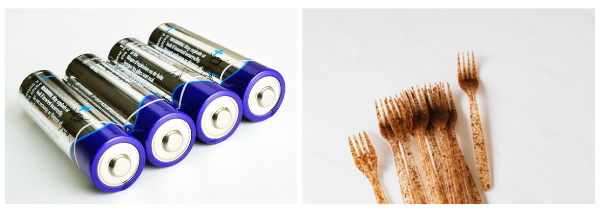
What is the Zero Waste Omnibus Amendment Act of 2020?
Currently, the Act applies to battery producers, but as of 2023, the law widens to include all residents and businesses. The new plan will benefit residents and businesses by widening access to recycling facilities by installing more trash containers. It will also require organizations to provide public recycling containers. As part of this, the law will include the need for specific colors, designs, and labeling for public waste containers.*
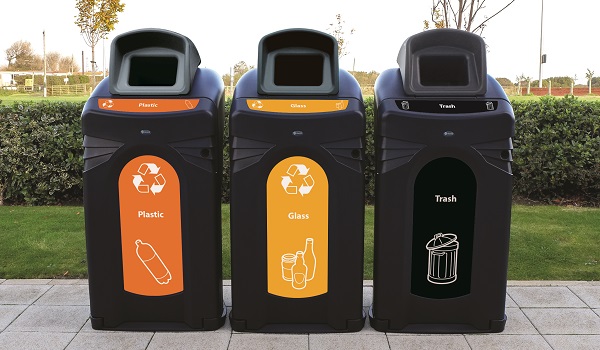
Why the focus on battery recycling?
Containing heavy and hazardous materials, batteries can contaminate the environment if incorrectly disposed of. On top of this, if incinerated, some materials can contaminate the air.*
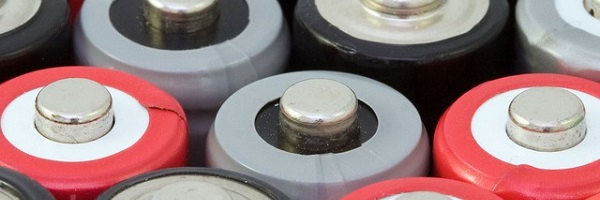
With the average American discarding 8 dry-cell batteries per year, there is a substantial need for correctly and safely recycling batteries, and the Zero Waste Omnibus Amendment Act of 2020 seeks to achieve that.
Introduced on January 1, 2022, the law stipulates that no producer can dispose of batteries in the district unless disposal takes place through a battery recycling program. By creating and extending access to battery source separation programs, the law increases safety around battery recycling while also increasing the likelihood of recycling compliance.
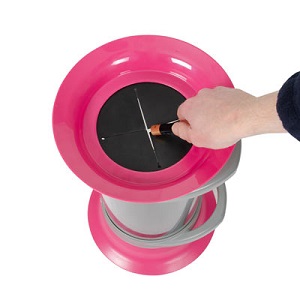
For more information on the importance of battery recycling, read our guide: The Basics of Battery Recycling.
How can I safely recycle batteries?
To lessen the possibility of fires when disposing of batteries, DC government has set out instructions for safely recycling batteries.
For lithium-based batteries and batteries greater than 9 volts, the government requires users to apply tape to the batteries’ terminals. Clear packing, electrical or masking tape, is suitable to use.*
For more guidance on properly disposing of batteries, see the DC government’s Proper Disposal of Batteries.
How Can Organizations Prepare for the Changes?
While the details of the 2023 resident and business target are yet to be confirmed, we suspect the best way to prepare for the changes will be to begin to implement a recycling program in workplaces and organizations.
With financial and business benefits attached to a successfully implemented source separation program, early installation of such will have numerous advantages for organizations. Customizable to an organization’s waste requirements, a successful recycling program identifies and manages specific waste streams, recognizes what can be recycled, and equips organizations for the upcoming law changes.
For advice and guidance on implementing a successful source separation program, read our eBook: A Guide to Creating A Successful Recycling Program.
What Battery Recycling Containers are Ideal for Battery Source Separation?
There are many battery collection containers available, but to maximize the success of source separation programs, organizations should consider the capacity, placement, design, and labeling.
C-Thru™ 10Q Battery Recycle Bin
Suitable for various locations, the C-Thru 10Q Battery Recycle Bin utilizes a narrow funnel aperture to lower the possibility of cross-contamination when collecting batteries. Reinforced through the transparent polycarbonate body, the indoor recycling station allows users to see the contents of the tube, lowering the likelihood of incorrect disposals.
With a 10-quart capacity, the container includes Duratec™ material handles on the top and bottom to ease emptying, while a screw-on removable top allows for effortless access.
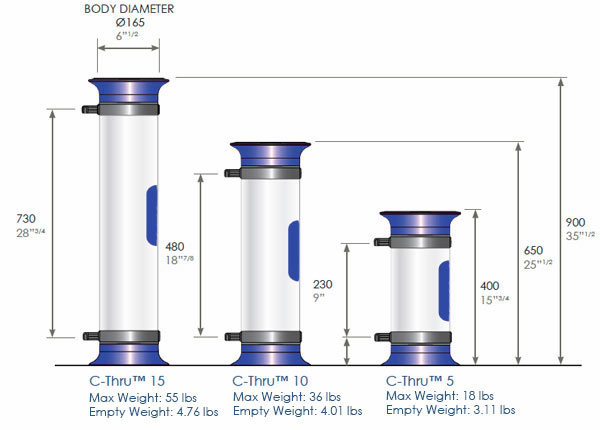
Available with blue, magenta, red, or black apertures and bases, the C-Thru bin’s color theme and labeling can be personalized to state recycling requirements and can be supplied with express shipping if required.
The C-Thru Battery Recycling range also includes the C-Thru 5Q Battery Recycle Bin and the C-Thru 15Q Battery Recycle Bin.
Nexus® 13G Battery Recycle Bin
Ideal for offices, schools, reception areas, and retail stores, the Nexus 13G Battery Recycle Bin is a durable and stylish closed flip-lid recycling receptacle. With a narrow footprint, the Nexus bin is ideal for central or desk-side positioning without obstructing passers-by.
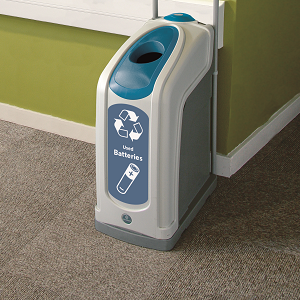
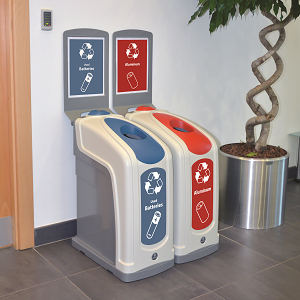
Equipped with a bag holder system and a removable front-opening door, the battery bin offers easy sack replacement and minimal maintenance requirements.
The Nexus 13G Battery Recycling Bin is customizable to match state recycling requirements.
To see more battery recycling stations, view our entire range of Battery Recycling Containers & Collection Tubes.
References
*https://www.wastedive.com/news/washington-dc-zero-waste-glass-recycling-organics-bill-becomes-law-funding-uncertain/597614/
*https://code.dccouncil.us/us/dc/council/laws/23-211
*https://guides.library.illinois.edu/battery-recycling/facts
*https://dpw.dc.gov/service/proper-disposal-batteries




